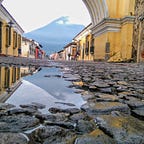Did you know these 6 facts about the Mayan civilisation in Guatemala?
The centre of the Maya Empire’s was the tropical lowlands that make up today’s Guatemala. Its peak in terms of influence and power hit at around the 6th century AD. By 900AD most of the giant cities were abandoned. Mayan civilisation has left behind artwork, architecture and plenty of evidence showing their excellence in pottery, writing, maths, calendar making and more.
Here are 6 facts you may not know about the Mayan civilisation in Guatemala
1. Mayans loved chocolate
Easter with its usual bounty of chocolate eggs has been and gone. And it might surprise chocolate lovers today that more than 2,600 years ago Mayans were enjoying a form of chocolate. While it was the Olmecs that began processing cacao around 3,500 years ago, there is archaeological evidence that Guatemalan Mayans were doing it too.
You could say that it was Mayans that turned chocolate into an art form. Ceramic vessels dating back to 600 BCE have been discovered in Guatemala that hold the chemical signatures of cacao. However, it wasn’t the same as the chocolate we enjoy today.
Mayans mixed cacao with chili peppers, cornmeal, honey and water to make a spicy, foamy hot ‘chocolate’ drink. Hieroglyphs and art from the time appear to show that cacao was important in rituals and celebrations. For example, the Dresden Codex shows a clear image of K’awil, the god of sustenance, holding a cup filled with cacao beans.
2. An architect not an archaeologist cracked the code to Mayan writing
An American architect born in Siberia, Tatiana Proskoyriakoff, began a part time job at the Penn Museum in Philadelphia when she couldn’t find one in her own sector. And in the 1930s, she went along on an expedition with the curator to the Guatemalan Maya site at Piedras Negras.
She had no formal training as an archaeologist but became an expert in Mayan antiquity. Her 1960 paper: “Historical Implication of a Pattern of Dates at Piedras Negras, Guatemala” was a major breakthrough in deciphering Mayan glyphs. She was the very first person to work out that the ‘upended frog’ glyph in the Mayan alphabet means birth, and the ‘toothache’ glyph means the date the king came to the throne. This in turn led to a way of identifying birth and death announcements and allowed future scholars to identify the Mayan rulers.
3. They wrote lots of books
The Mayan people wrote elaborate books on long strips of paper that they made from fig tree bark. But today, only three Maya codices still survive. These are called the Paris Codex, the Madrid Codex and the Dresden Codex. So where did the books go? While it’s thought some succumbed to the damp conditions across the region, many others were purposely destroyed by European invaders.
We have evidence directly from the source too. Diego de Landa was a Spanish friar who travelled to the Yucatan sometime in the 1540s. He said: “We found a large number of books in their letters… we burned them all, which… caused them sorrow.”
4. Maya people took their beauty regimes seriously
The Mayans went way beyond using make up and fancy clothes to change their outward appearance. During young childhood, men and women had their heads bound to purposefully shape their skulls into an elongated cone shape. This was probably considered to signify differences in social status. They also liked to drill holes into their teeth and inlay them with jewels made from hematite, turquoise, jade and pyrite.
5. They loved extreme sports
All across the Mayan region there are ballcourts where they played a game called pitz. It involved passing a heavy ball to each other without using their hands. They were equipped with protection on their arms, knees and ribs and the aim was to score a goal of sorts through a high stone hoop. However, rather than a fun game, pitz was an important ritual and there is evidence that the losers could be victims of human sacrifice.
6. Debate still rages as to why Mayans began to decline
The peak of the Mayan civilisation was during the Classic Maya period between 300 and 600 BCE. Sometime in the 9th century it started to go wrong. Cities that were home to around 70,000 people appear to have been abruptly abandoned. There are various theories as to why this happened, including overpopulation, drought, warfare between city states or a mass migration to the coast. While many cities were deserted, Mayans never disappeared, and their descendants are still living in Guatemala and other regions. In Guatemala, the Maya still form the majority of the population.
